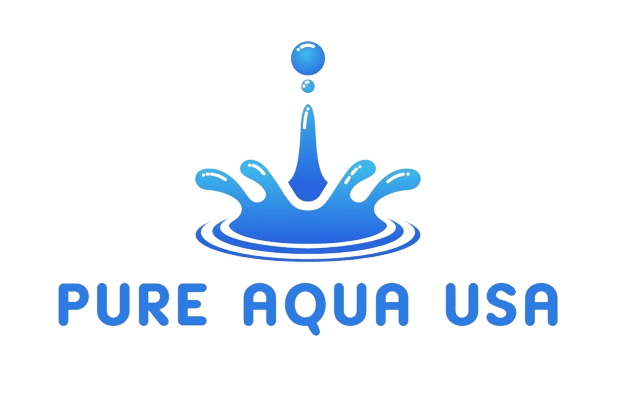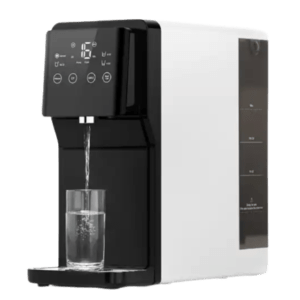Your cart is currently empty!
UV Water Purification Systems
$768.00
UV water purification systems are a highly effective and environmentally friendly way to disinfect water by using ultraviolet light to inactivate bacteria, viruses, and other microorganisms. These systems offer a chemical-free method of water treatment, making them ideal for ensuring safe and clean water for drinking and household use. UV water purification systems are commonly used in residential, commercial, and industrial settings to provide a reliable and efficient way to eliminate harmful pathogens from water sources.
10 in stock (can be backordered)
- Description
- Additional information
- Specifications
- Installation
- Maintenance
- Replacement Parts
- Q&A
- Advantages and Disadvantages
- Applications
- Downloads
- Drawings
- Reviews (0)
Description
UV water purification systems utilize the power of ultraviolet light to effectively disinfect water by targeting and inactivating microorganisms such as bacteria, viruses, and protozoa. This method of water treatment has gained widespread recognition for its ability to provide safe and reliable water purification without the need for chemicals or additives.
The primary component of a UV water purification system is the UV lamp, which emits a specific wavelength of ultraviolet light. As water flows through the system, it is exposed to this UV light, which penetrates the cells of microorganisms, disrupting their DNA and rendering them incapable of reproducing. As a result, the microorganisms are effectively neutralized, ensuring that the water is free from harmful pathogens.
One of the key advantages of UV water purification is its ability to provide consistent and thorough disinfection without altering the taste, odor, or chemical composition of the water. Unlike chemical disinfection methods, such as chlorination, UV treatment does not introduce any residual taste or odor, making it an ideal choice for ensuring the aesthetic quality of drinking water.
UV water purification systems are often integrated into point-of-use or point-of-entry water treatment systems. Point-of-use systems are installed at specific water outlets, such as kitchen faucets or water coolers, providing localized treatment for specific sources of water. Meanwhile, point-of-entry systems, also known as whole house UV systems, are installed at the main water supply entry point, ensuring that all water entering the household is effectively disinfected.
When considering UV water purification systems, it’s important to take into account certain factors that can influence their performance and effectiveness. These factors include the flow rate of the system, the intensity and quality of the UV lamp, and the transmittance of the water being treated. Flow rate is particularly critical, as it determines the amount of time water is exposed to the UV light and directly affects the system’s disinfection efficiency.
Proper maintenance and monitoring are essential for ensuring the ongoing effectiveness of UV water purification systems. This includes regular inspection and cleaning of the UV lamp to remove any potential buildup or residue that could diminish its output. Additionally, monitoring the intensity of the UV light and replacing the lamp at the recommended intervals are necessary to maintain optimal disinfection levels.
UV systems are commonly used in a variety of applications, including residential, commercial, and industrial settings. In residential and commercial environments, they are utilized to ensure the safety and purity of drinking water, as well as for treating water used in food and beverage production. In industrial settings, UV water purification systems play a crucial role in processes such as pharmaceutical manufacturing, wastewater treatment, and the production of ultrapure water for various applications.
In summary, UV water purification systems offer a highly effective and chemical-free method of disinfecting water, providing safe and reliable purification without altering the water’s taste or chemical composition. By understanding the principles and advantages of UV water purification, individuals and organizations can make informed decisions about implementing these systems to ensure the delivery of clean and disinfected water for various applications.
Other Interests
Additional information
| Weight | 12 lbs |
|---|---|
| Dimensions | 36 × 8 × 8 in |
Specifications
Installation
Maintenance
Replacement Parts
Q&A
Q: What is a UV water purification system?
A: A UV water purification system is a method of water treatment that uses ultraviolet light to inactivate or kill bacteria, viruses, and other pathogens in water.
Q: How does a UV water purification system work?
A: UV water purification systems work by exposing water to ultraviolet light, which disrupts the DNA of microorganisms, preventing them from reproducing and rendering them harmless.
Q: What are the advantages of using a UV water purification system?
A: Some advantages of UV water purification systems include their effectiveness at killing a wide range of microorganisms, their chemical-free operation, and their low maintenance requirements.
Q: Are there any limitations to using a UV water purification system?
A: UV water purification systems are generally not effective at removing other contaminants such as heavy metals, chemicals, or sediment from water. Additionally, the effectiveness of the UV light can be reduced if the water is cloudy or contains high levels of particulate matter.
Q: How can I maintain a UV water purification system?
A: Maintenance of a UV water purification system typically involves periodic cleaning and replacement of the UV lamp, as well as regular monitoring of the system’s performance.
Advantages and Disadvantages
Advantages:
- Effective at Killing Microorganisms: UV water purification systems are highly effective at inactivating a wide range of microorganisms, including bacteria, viruses, and protozoa.
- Chemical-Free Operation: Unlike some other water treatment methods, UV purification does not require the use of chemicals such as chlorine or hydrogen peroxide, making it a more environmentally friendly option.
- Low Maintenance: UV water purification systems generally have low maintenance requirements, with periodic lamp replacement being the primary ongoing task.
- Fast Treatment: UV technology works quickly, with water being treated as soon as it passes through the UV chamber.
Disadvantages:
- Limited to Microorganism Inactivation: UV water purification systems are not effective at removing other contaminants from water, such as heavy metals, chemicals, or sediment.
- Effectiveness Affected by Water Quality: The effectiveness of UV light can be reduced if the water is cloudy or contains high levels of particulate matter, as these can block the UV rays from reaching microorganisms.
- Energy Consumption: UV water purification systems require electricity to power the UV lamps, which can lead to increased energy consumption compared to some other water treatment methods.
- Initial Cost: The upfront cost of installing a UV water purification system may be higher than some other water treatment options, although the long-term maintenance costs are generally lower.
Applications
Downloads
Drawings
Only logged in customers who have purchased this product may leave a review.









Reviews
There are no reviews yet.